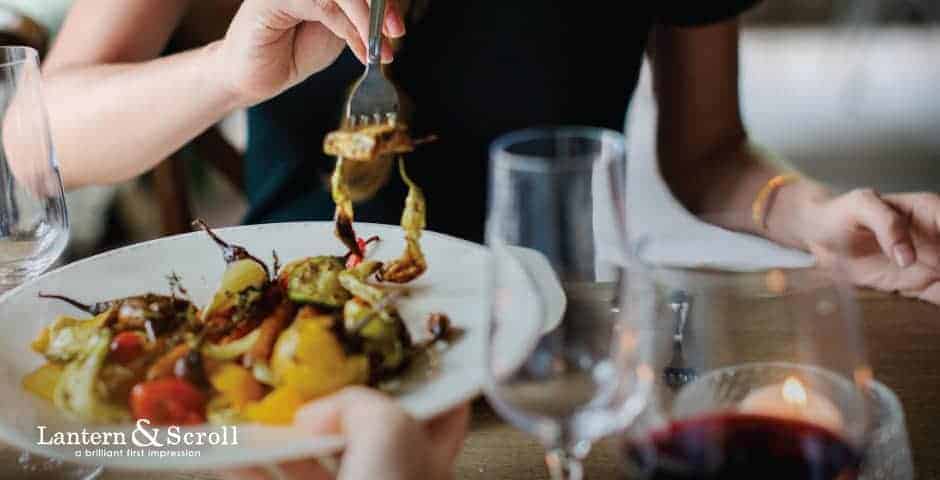Charleston has an abundance of excellent restaurants that serve top quality food, but many of them go the extra step of being farm-to-table and are part of a movement to inform restaurant patrons about exactly what they’re eating, where it came from, and how it was produced. Local eateries who claim to be farm-to-table use locally-grow ingredients where possible, to assure freshness. When you dine in a Charleston restaurant, maybe as you sit on the restaurant patio adorned with outdoor gas lights, you taking in the best that low country cuisine has to offer while enjoying with the ambience.
What Is The Farm-To Table Movement?
The definition of what is considered farm-to-table varies considerably, and in its purest form means that a farm serves food grown there right on site. In practice, restaurants who claim to be farm-to-table have a direct relationship between themselves and certain farms where they buy foods rather than from a distributor. Local farms benefit by keeping more profits than when they deal with a more complex distribution chain, plus they have the knowledge of how their food will be used. Restaurants enjoy the freshest local ingredients that comes to them often hours after it is harvested. They may even have access to specialty crops, grown just for them, that many other restaurants in the area have no easy local access to.
Menus at restaurants who call themselves farm-to-table ofte have the source of the food printed right on the menu or readily available for customers to view. For example, if they advertise that they use organic salad greens from Bill Smith or humanely-slaughtered cattle from John Lancer’s farm, they must have that relationship currently in place – or face fraud lawsuits from consumers, producers, or government agencies.
Farm-To-Table Restaurants To Try In Charleston
Some of the most prominent restaurants in Charleston pride themselves as being farm-to-table as they present Lowcountry cooking. Here are a few that you should include if you visit the city and want to taste local Southern cooking at its finest. Some do Southern cuisine so well that they are James Beard winners. Not surprisingly, given the location of Charleston, many find restaurants use locally-caught seafood.
Husk. Located at 76 Queen St., Chef Sean Brock developed his restaurant to be a showcase for Southern-grown products. Selections vary based on what is available, but some favorites still make the menu frequently. Brock lists ingredients on a large floor-to-ceiling chalk board.
FIG. Short for FOOD IS GOOD, FIG offers food from local farmers and fishermen at its location at 232 Meeting St. Most reviewers agree that Chef Mike Lata creates memorable Lowcountry dishes.
McCrady’s. Featuring the handiwork of Chef Sean Brock, this time with a contemporary touch, McCrady’s at 155 East Bay St., serves updated southern classics.
Fat Hen. Using local ingredients and French cooking techniques to make Lowcountry classics, the Fat Hen is based on Johns Island at 3140 Maybank Highway. It is open for dinner and Sunday brunch where local seafood specialties dominate the dinner menu.
The Grocery. Chef Kevin Johnson makes his restaurant The Grocery at 4 Cannon St. outstanding by not only purchasing seasonal ingredients from farmers, but also by canning produce in house so that many food items are available all year long. His wood burning stove makes the restaurant feel warm and comfortable. To accompany his Lowcountry cuisine, he offers wide selection of craft beers, wine, and cocktails.
Wild Olive. An Italian restaurant at 2867 Maybank Highway, the Wild Olive offers homemade pasta, house cured salami, and regional Italian dishes that use produce growing in the Lowcountry.
SNOB. With a name that means Slightly North of Broad, SNOB at 192 East Bay St. is a pioneer in farm to table cooking. For over 20 years, SNOB has merged French and Southern cooking techniques with locally grown vegetables, meats, and seafoods. It is an example for other local restaurants who want to profitably incorporate farm-to-table techniques into their operations.
The Ordinary. Located at 544 King St., this restaurant Joint effort between Chef Mikes Lata and Adam Nemerow specializes in local seafood and coastal wines selected to compliment oysters and shellfish. You can enjoy both cold plates of tuna, shrimp, and oysters, as well as hot foods including oyster sliders, blue crab fritters, white barbeque shrimp, and more accompanied by local vegetables.
Good Eating, Affordable Prices
The farm-to-table movement Is sometimes written off as a fad for millennials, as well as an elitist movement that increases the price of restaurant food so that it is outside the price range many families and individuals. While many of the fine Charleston restaurants mentioned above to come with healthy price tags, there are plenty of places in Charleston that offer regional cuisine made with local ingredients. For example, Jestine’s Kitchen at 251 Meeting St., the Hominy Grill at207 Rutledge Ave., or Leon’s Oyster Shop at 698 King St. offer reasonably priced options on Lowcountry classics.
More Lowcountry Classics: Outdoor Gas Lights
The tasty cuisine of the Lowcountry is made even better when the ingredients are as fresh as they are at farm-to-table restaurants in the traditional city of Charleston, the oldest in South Carolina. The food is classic, as are many things in Charleston, a city where history lives in old buildings, cobblestone streets, and touches of the past such as outdoor gas lights.
While you have to visit the city to enjoy the local cuisine, you can recreate Southern charm at your own home with gas and electric reproduction lanterns from Lantern & Scroll. With a showroom in Charlotte, a website where you can view current collections and shop, and a helpful staff you can confer with by, Lantern & Scroll wants to help to bring the warmth of copper fixtures to your home.

